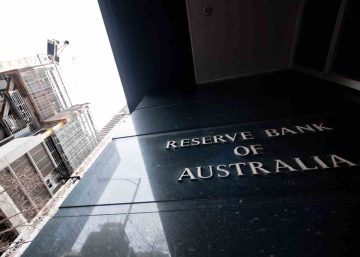In Part 1 of this series we looked at how strategic planning can help you assume a proactive position for your business.
In Part 2 of this series we’re going to be looking at the initial stages of plan development and the concepts you need to consider. Essentially, your plan is going to address the following 3 big picture questions:
Where are you now?
Before you can move forward you’ll need to take stock of your current position. Getting an accurate picture of what your business currently looks like, and what the operating environment looks like, will provide the starting point for assessing what needs to be done in the future to reach your goals.
Where do you want to be?
To develop your plan you need to know exactly what you want to head towards. Unless you know and understand your destination, and see it as achievable, you can get distracted or diverted by other events or problems that may occur along the way. Clarity is key. A clear direction and focus will lead to clear goals and action plans.
What do you need to get there?
Once you have identified the outcome you are trying to achieve you are ready to develop a plan to take you there.
Planning Stage 1 – Analysis
The Analysis stage of the strategic planning process is an exploration of the overall condition of your business and the environment in which it operates. Essentially it paints a detailed picture of who you are right now.
A thorough internal analysis will consider the strengths and weaknesses of your business, the financial performance, people and culture, operational limitations, current market position and the critical issues facing the organisation.
An external analysis should focus on your competitors as well as an assessment of market opportunities and threats, changing technologies, changing regulatory or legislative concerns, trends in the market and other influences on your business.
You can use the following as a starting point for the factors to consider in this part of the process:
| Internal Analysis | External Analysis |
| What are the strengths that contribute to the success of the business? | Who are your primary competitors? What competitive advantage do they have? What weaknesses do you think they have? |
| What are the weaknesses that exist within the business? | What are the potential opportunities for your business? |
| What would your customers identify as a weakness in your business? | What are the current and potential threats to the growth and viability of your business? |
| What would your competitors identify as a weakness in your business? | Are any of your competitors developing products or new markets which could be a threat to your business? |
| What are the critical issues facing your business today or in the near future? | Identify any technological changes that represent a threat or opportunity to your business? |
| How has your business been tracking financially over the past few years? | Is technology in your business changing rapidly and will your business be able to keep up with it? |
| Assess the quality of the people working for your business. What is the level of talent? In what areas are your people letting down the business or improving the business? | Are there any regulatory or legislative changes that might affect your business? Think about both positive or adverse effects. |
| What are the operational limitations of the business in terms of technology, process, space, skills? | What market trends are affecting, or will affect, your business? |
| Assess the culture of your business. What are the attitudes towards customers, employees, management, business growth, learning, skill development and process development? | In the markets currently served by your business, are there key customers or customer groups that aren’t doing business with you? Are your competitors doing business with them? |
| What is the level of energy, innovation and creativity like in your business? | Are your customers’ buying habits changing? |
Once you have thoroughly analysed and documented the current state of play it is time to move on to documenting who and where you want to be.
Planning Stage 2 – Developing your vision and mission statements
Developing a vision and mission statement is an effective way to communicate to staff, customers, vendors and the general public what your business stands for and where it is headed. The statements reflect the philosophy and principles that the business, and everyone in it, adheres to.
A vision statement is a short and inspiring statement communicating what a business intends to become or achieve at some point in the future. It is a statement of values, and sometimes goals, which a business constantly strives towards but does not explain how it is going to achieve those goals.
A mission statement clarifies an organisations purpose, is longer than a vision statement, but still unambiguous and to the point. A mission statement may include the following:
- Your moral stance eg. “an environmentally friendly company”
- How you want to be perceived as a company
- Your primary business focus and the goals you are working towards
- Who you target and who you care about
- A very high level description of what you offer
- How you expect to grow
For simplicity, vision and mission statements are sometimes combined into the one statement. The most important feature of this statement is that it is honest, it is brief and that it means something. Consider the following questions when developing your statements:
- What is important to you?
- What are you trying to achieve?
- Who do you serve?
- How do you want to be perceived?
Some examples of inspiring mission/vision statements:
The Walt Disney Company – mission statement
“The mission of The Walt Disney Company is to be one of the world’s leading producers and providers of entertainment and information Using our portfolio of brands to differentiate our content, services and consumer products, we seek to develop the most creative, innovative and profitable entertainment experiences and related products in the world.”
Ben & Jerry’s Ice Cream – 3 part mission statement
Product Mission: To make, distribute and sell the finest quality all natural ice cream and euphoric concoctions with a continued commitment to incorporating wholesome, natural ingredients and promoting business practices that respect the Earth and the Environment.
Economic Mission: To operate the company on a sustainable financial basis of profitable growth, increasing value for our stakeholders and expanding opportunities for development of career growth for our employees.
Social Mission: To operate the company in a way that actively recognises the central role that business plays in society by initiating innovative ways to improve the quality of life locally, nationally and internationally.
IKEA – vision statement
At IKEA our vision is to create a better everyday life for many people. Our business idea supports this vision by offering a wide range of well-designed, functional home furnishing products at prices so low that as many people as possible will be able to afford them.
Google – mission statement
“Google’s mission is to organize the world’s information and make it universally accessible and useful.”
Amazon – combined mission/vision statement
“Amazon’s vision is to be earth’s most customer centric company; to build a place where people can come to find and discover anything they might want to buy online.”
In our next article in this strategic planning series we will move on to the turning your big picture goals into actionable steps.
If you would like to discuss strategic planning in your business, please get in touch with our business improvement experts. You can contact us on 07 3023 4800 or at mail@marshpartners.com.au
Share this article on LinkedIn:
Subscribe to our newsletter:
Get tax updates, business advice and seminar invitations delivered straight to your inbox.







